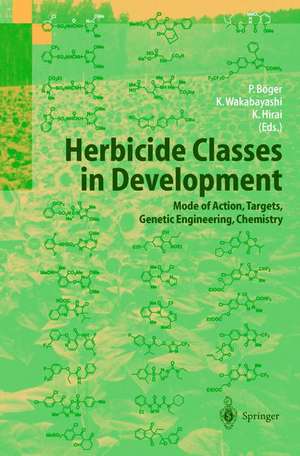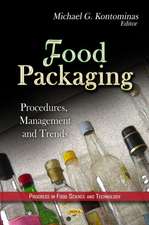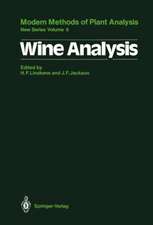Herbicide Classes in Development: Mode of Action, Targets, Genetic Engineering, Chemistry
Editat de Peter Böger, Ko Wakabayashi, Kenji Hiraien Limba Engleză Hardback – 7 aug 2002
| Toate formatele și edițiile | Preț | Express |
|---|---|---|
| Paperback (1) | 948.92 lei 6-8 săpt. | |
| Springer Berlin, Heidelberg – 23 sep 2011 | 948.92 lei 6-8 săpt. | |
| Hardback (1) | 1227.36 lei 6-8 săpt. | |
| Springer Berlin, Heidelberg – 7 aug 2002 | 1227.36 lei 6-8 săpt. |
Preț: 1227.36 lei
Preț vechi: 1496.78 lei
-18% Nou
Puncte Express: 1841
Preț estimativ în valută:
234.89€ • 242.65$ • 195.48£
234.89€ • 242.65$ • 195.48£
Carte tipărită la comandă
Livrare economică 25 martie-08 aprilie
Preluare comenzi: 021 569.72.76
Specificații
ISBN-13: 9783540431473
ISBN-10: 3540431470
Pagini: 388
Ilustrații: XXI, 364 p. 2 illus. in color.
Dimensiuni: 155 x 235 x 29 mm
Greutate: 0.72 kg
Ediția:2002
Editura: Springer Berlin, Heidelberg
Colecția Springer
Locul publicării:Berlin, Heidelberg, Germany
ISBN-10: 3540431470
Pagini: 388
Ilustrații: XXI, 364 p. 2 illus. in color.
Dimensiuni: 155 x 235 x 29 mm
Greutate: 0.72 kg
Ediția:2002
Editura: Springer Berlin, Heidelberg
Colecția Springer
Locul publicării:Berlin, Heidelberg, Germany
Public țintă
Professional/practitionerCuprins
1 Acetolactate Synthase Inhibitors.- 1.1 Introduction.- 1.2 Acetolactate Synthase-Inhibiting Herbicides Actively Developed in the Late 1990s.- 1.3 Discovery of Pyrimidinyl Carboxy Herbicides (Pyrimidinylsalicylate Class Herbicides).- 1.4 Herbicidal Activity of Pyrimidinyl Carboxy Herbicides.- 1.5 Physiological Plant Response to Pyrimidinyl Carboxy Herbicides.- 1.6 Mode of Action and Selectivity of Pyrimidinyl Carboxy Herbicides.- 1.7 Biological Characteristics of the Target Enzyme.- 1.8 Inhibition Mechanism of the Target Enzyme by Pyrimidinyl Carboxy Herbicides.- 1.9 Molecular Genetics of Target Enzyme.- References.- 2 Bleaching Herbicides: Action Mechanism in Carotenoid Biosynthesis, Structural Requirements and Engineering of Resistance.- 2.1 Herbicidal Effect and Mode of Action.- 2.2 Interaction of Inhibitors with Carotene Desaturation.- 2.3 Structural Requirements for an Inhibitor of Phytoene Desaturase.- 2.4 Strategies for Genetic Engineering of Herbicide Resistance by Modification of the Carotenogenic Pathway.- 2.5 Conclusion and Perspectives.- References.- 3 Inhibitors of Aromatic Amino Acid Biosynthesis (Glyphosate).- 3.1 Introduction.- 3.2 Symptoms of Herbicidal Activity.- 3.3 Mode of Action of Glyphosate.- 3.4 Mechanisms for Resistance and Tolerance to Glyphosate.- 3.5 Summary.- References.- 4 Inhibitors of Glutamine Synthetase.- 4.1 Introduction.- 4.2 Plant Glutamine Synthetase Isoforms and Their Function.- 4.3 Glutamine Synthetase Inhibitors.- 4.4 Discovery of the Herbicidal Activity of Phosphinothricin and Bialaphos.- 4.5 Mode of Glutamine Synthetase Inhibition.- 4.6 Effects of Glutamine Synthetase Inhibitors in Plants.- 4.7 Attempts to Generate Selectivity for Glufosinate.- References.- 5 Acetyl-CoA Carboxylase Inhibitors.- 5.1 Introduction.- 5.2 Symptoms of Herbicidal Activity.- 5.3 Biochemical Characteristics of the Target Enzyme.- 5.4 Mode of Action of Cyclohexanedione and Aryloxyphenoxypropanoate Herbicides.- 5.5 Assays for Acetyl-CoA Carboxylase Activity.- 5.6 Molecular Genetics of Resistance to Acetyl-CoA Carboxylase Inhibitors.- References.- 6 Inhibitors of Biosynthesis of Very-Long-Chain Fatty Acids.- 6.1 Introduction.- 6.2 The Model System.- 6.3 Very Long-Chain Fatty Acid Biosynthesis Inhibition in Intact Leaves.- 6.4 The Cell-Free Elongase System.- 6.5 Assumptions of the Reaction Mechanism.- 6.6 Considerations on Resistance.- References.- 7 Cellulose Biosynthesis Inhibitor Herbicides.- 7.1 Introduction.- 7.2 Mode of Action Studies.- 7.3 Resistant Biotypes.- 7.4 Habituation.- 7.5 The Unusual Case of Quinclorac.- 7.6 Conspectus.- References.- 8 Inhibitors of Protoporphyrinogen Oxidase: A Brief Update.- 8.1 Introduction.- 8.2 Protoporphyrinogen Oxidase Inhibitors and Their Mode of Action.- 8.3 Biochemical Characterization of Protoporphyrinogen Oxidase.- 8.4 Protoporphyrinogen Oxidase Genes and Transgenic Herbicide-Resistant Plants.- 8.5 Recent Advances in QSAR Studies.- 8.6 Antioxidative Stress Responses of Plants to Protoporphyrinogen Oxidase Inhibitors.- References.- 9 Genetic Engineering of Herbicide-Resistant Plants.- 9.1 Introduction.- 9.2 Strategy.- 9.3 Cloning of the Genes.- 9.4 Gene Transfer.- 9.5 Vector Constructs.- 9.6 Conclusions.- References.- 10 Major Synthetic Routes for Modern Herbicide Classes and Agrochemical Characteristics.- 10.1 Introduction.- 10.2 Acetolactate Synthase Inhibitors.- 10.3 Carotenogenesis Inhibitors.- 10.4 Aromatic Amino Acid Biosynthesis Inhibitors.- 10.5 Glutamine Synthetase Inhibitors.- 10.6 Acetyl CoA Carboxylase (ACCase) Inhibitors.- 10.7 Very Long-Chain Fatty Acids Biosynthesis Inhibitors.- 10.8 Cellulose Biosynthesis Inhibitors.- 10.9 Protoporphyrinogen-IX Oxidase Inhibitors.- 10.10 Notes.- Patent Literature.- 11 Diverse Response of Plants Towards Chiral Phytotoxic Chemicals.- 11.1 Introduction.- 11.2 Diverse Response of Optically Active Herbicides.- 11.3 Diverse Response of Plants Through Chirality.- 11.4 Chirality and Activity Relationship.- References.- 12 Transcuticular Penetration of Foliar-Applied Pesticides - Its Analysis by a Logistic-Kinetic Penetration Model.- 12.1 Introduction.- 12.2 Overview.- 12.3 Logistic-Kinetic Transcuticular Penetration Model of Foliar-Applied Pesticides.- 12.4 Parameters and Factors Governing Transcuticular Penetration Kinetics of Foliar-Applied Pesticides.- 12.5 Effects of Adjuvants on Transcuticular Penetration Kinetics of Foliar-Applied Pesticides.- 12.6 Discussion and Conclusions.- References.- 13 Structure-Activity Correlation of Very Long-Chain Fatty Acid Biosynthesis Inhibitors.- 13.1 Introduction.- 13.2 Very Long-Chain Fatty Acid Biosynthesis Inhibition by Herbicides.- 13.3 Very Long-Chain Fatty Acid Biosynthesis Inhibition by Thenylchlor and Its Analogs.- 13.4 Action of Cafenstrole and its Analogs.- 13.5 Action of Indanofan and its Analogs.- 13.6 Outlook.- References.
Caracteristici
Competent overview on the most recently developed active compounds that led to very successful new herbicides Includes supplementary material: sn.pub/extras












